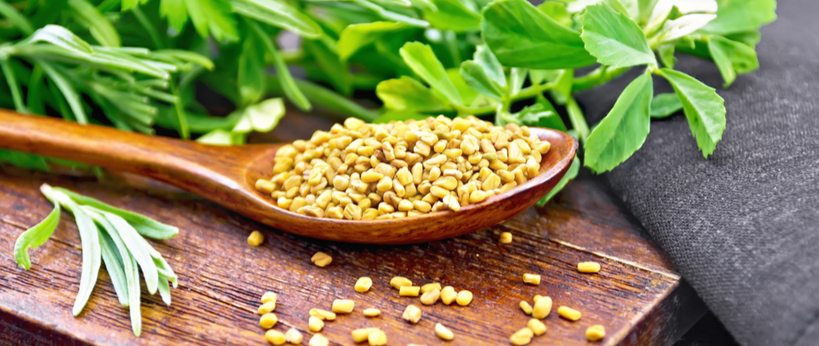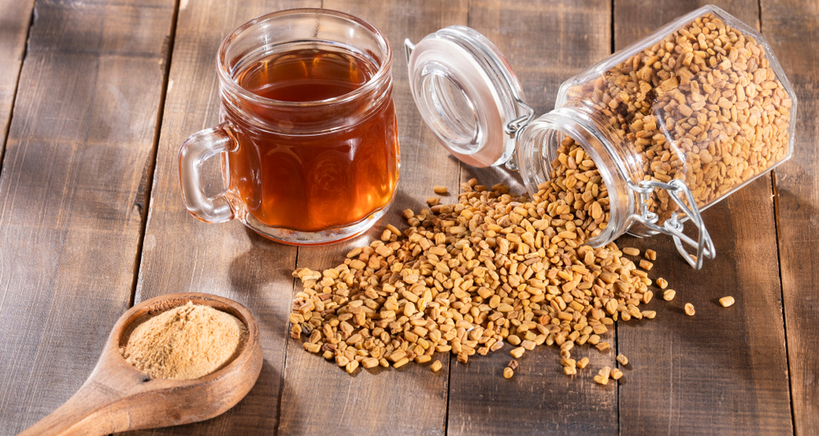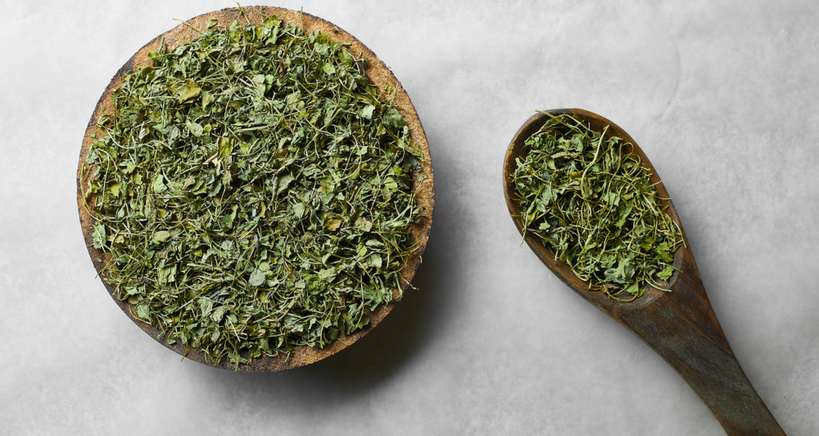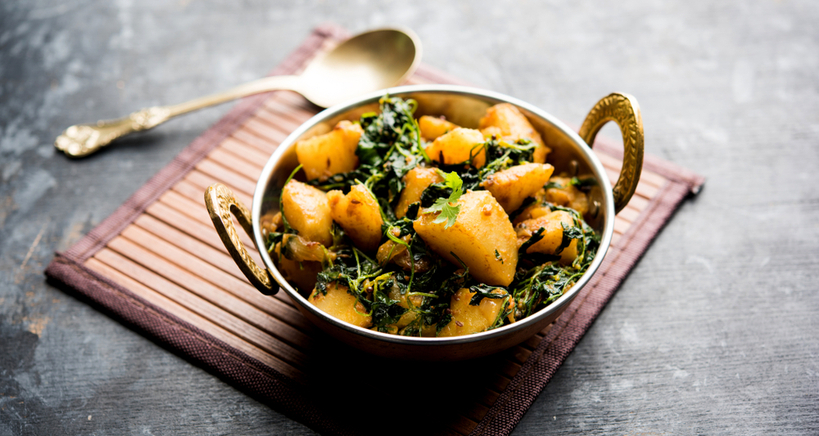
If you are a chef or restaurant owner looking for a new spice to infuse life into your customers’ favorite dishes, it’s time to add fenugreek to your list of ingredients! A long-time staple in Indian cuisine with a rich history in traditional Chinese medicine, fenugreek is an aromatic plant that is both an herb and a spice. It is available year-round as a seed (popularly known as methi), in whole or powdered form (with the former including the root and twigs), and as dry leaves that are especially popular in Middle Eastern cooking.
Fenugreek Quick Facts
The fenugreek plant is largely grown in South Asia and parts of the Mediterranean. It features small round leaves with long pods that contain distinctive bitter-tasting seeds. Its taste is described as sweet yet bitter with a hint of burnt sugar and a maple syrup aroma when cooked. In addition to packing a tasteful punch, fenugreek seeds provide some significant health benefits, including anti-inflammatory properties and antioxidant activities that are good for the body.
Fenugreek Health Benefits
Beyond its culinary assets, both the seeds and leaves of fenugreek have been used throughout the ages for medicinal purposes. These include helping control blood sugar levels and diabetes, lowering cholesterol, protecting the heart, and treating stomach disorders. Nursing mothers also use it to improve lactation, and in fact, a teaspoon of fenugreek seeds consumed each morning was once a popular recommendation.
In its varying forms over hundreds of years, the following are some of the condition’s fenugreek has been used to prevent and treat:
- Open wounds
- Muscle pain
- Inflammation
- Low blood pressure
- Diabetes
- Digestive problems
- Kidney problems
- Obesity
- Low libido
- Painful menstruation
- Enhance breast milk production and flow
Introduce Methi Water to Your Customers

Perhaps the most famous way to enjoy is fenugreek seeds is to prepare methi water. Packed with fiber, it is particularly recommended for aiding weight loss efforts since it keeps consumers full for longer and better able to manage their appetite. Methi or fenugreek water is also said to help flush out harmful toxins from the body, prevent indigestion and constipation, and improve bowel movements. It is especially recommended for diabetics as its fiber content enables the slow release of sugar, and according to the experts, methi seeds improve insulin activity.
How to Prepare Methi Water
Method #1: Over a low flame, roast 10 grams of fenugreek seeds. Using a blender, turn seeds into a fine powder. Add 1 teaspoon of powder to a warm glass of water, mix, and voila! For maximum benefits, drink one glass of methi water in the morning.
Method #2: Soak 10 grams of fenugreek seeds in two cups of hot water. Filter the water and drink in the morning.
Finally, to benefit from all the seeds’ essential minerals and fiber, you can sprout your own methi seeds as follows: Soak a thin piece of a clean cloth in water. Place a handful of fenugreek seeds on the moist cloth. Cover with a plate or other utensil. For three nights, allow the seeds to sprout. On the fourth day, uncover. By day #5, the sprouts are ready for consumption.
Fenugreek Dishes: Tips for Chefs and Restaurateurs
By now, you are no doubt hungry for some ideas on how to add fenugreek to a range of main and side dishes. With its unique flavor that begins as slightly bitter yet bears a lingering, rolling sweetness, chef enthusiasts use it a go-to ingredient for any dish that needs to balance out sour or sweetness. Furthermore, the spice is popularly added to curries to balance spicy and earthy flavors, to plainer dishes such as lentils and potatoes to add depth, and to round out marinades and sauces of all kinds.
For your benefit, here are some more ways to add the ‘superfood’ and weight-loss aid to a wide range of dishes:

- Toss a handful of fenugreek chopped leaves into a potato stew or a pot of simmering tomato sauce
- Mix fenugreek toasted seeds with garbanzo beans
- Add fenugreek seeds, salt, and a dash of cream to a bowl of steamed broccoli or other vegetables
- Crush some dried fenugreek leaves into a powder
- Mix into mashed potatoes for a crowd favorite!
- For a to-die-for marinated fish dish, combine crushed, dried fenugreek leaves with some yogurt and mustard. Spread over fish, then broil or grill
- Did you know that you can even use fenugreek to make mouth-watering dinner rolls? Simply add 10 grams of dried fenugreek leaves into one kilogram of any flour mix, then pair with your customers’ favorite salads and cheeses.
Fenugreek Recipes
If all this 411 has whet your appetite for some bona fide recipes, you’re in luck! Here are some chef-recommended favorites to experiment with.
Fenugreek Roast Chicken
Ingredients
- 1 whole chicken
- 1 tsp. salt
- 1 tsp. ground black pepper
- 4 tbsp. margarine at room temperature
- 1 tsp. melted margarine for basting
- 2 tbsp. crushed, dried fenugreek leaves
- 1 tsp. crushed red pepper flakes
Instructions
- Preheat oven to 450 degrees.
- Remove excess fat/skin from chicken. Rinse and pat dry.
- Place chicken in a roasting pan. Lightly season with salt and pepper.
- Combine room-temperature margarine, salt, fenugreek leaves, and red pepper flakes in a small bowl. Mix.
- Liberally rub mixture all over the chicken.
- Breast side down, roast for 20-30 minutes or until skin begins to brown
- Turn chicken breast side up. Baste with melted margarine.
- Roast for 5 minutes, then baste again.
- Lower oven temperature to 325 degrees, bake for another 45-55 minutes.
- Optional: For a well-browned end result, finish on ‘broil’ for a few minutes.
Fenugreek Potato Stir Fry
This popular Indian side dish is vegan, gluten-free, and delish!

Ingredients
- 4-6 potatoes (preferably Russet,Yukon Gold, Red, or baby potatoes)
- Fresh, frozen, or dried fenugreek leaves
- Spices to flavor. Recommended: garlic, ginger, green chilies, turmeric, cumin seeds, garam malasa
Instructions
- Peel potatoes
- Cut into cubes (slice baby potatoes in half)
- Wash fresh methi leaves by running under water. Separate the leaves from the stems, chop roughly, and set aside. Frozen or dried leaves can be used as is.
- Heat oil in a pan. Adding spices one at a time, saute for 1-2 minutes
- Add potatoes, mixing and sauteeing until potatoes are cooked
- Add fenugreek leaves and garam masala, toss together, and cook for another 2-3 minutes
- Bon Appétit!